At Crisis there is a piece by Eric Sammons entitled “Our Incurious Bishops“.
The idea is this. The SSPX just consecrated a huge and beautiful church in Kansas. It was packed with precisely the sort of people bishops might like to see: devout, young, large families, etc. The next day there was confirmation of an absolute hoard of confirmands.
On a similar note at Catholic World Report there is a piece about how numbers of priestly vocations are down and… why they might be down. In Milan there is a scramble to find solutions, some good, some really bad. But the problems are deeper than how many years of this or that sort of formation or whether or not seminarians should wear clerical clothing. The writer thinks that, as the old saying goes, the problem may be at the head.
Normal people, when they try to do something and they don’t get too far, on seeing others succeed begin to wonder how they did it. Are they doing something differently? What’s the key to their success? Moreover, when normal people fail several times they make changes. You know the old adage.
I have in mind a couple scenes from the movie The Patriot with Mel Gibson. Early on you see him trying to make a very light weight rocking chair. As he rocks, about the second time the frail thing implodes, cracking him to the floor in splinters. In anger he hurls it into the corner where is a pile of previous experiments. Later in the movie, he is in the house of a British General against whom he is fighting. In the room where he is waiting for the General to appear there is a rocking chair like the one he was trying to make. He sits down and rocks and it is fine. He’s bumfuzzled. As the scene moves on he’s viewed by the General down on the floor looking more closely at the underside of the chair.
The Crisis piece says that the SSPX is growing and dioceses are in decline in many ways. Why? What is the SSPX doing that attracts followers? How are they able to build a huge new seminary in Virginia and a huge new church in Kansas?
The CWR piece suggest that the College of Cardinals had better do some serious soul searching about the future of the Church. What is going on now isn’t working. Wanna try it again?
Sammons writes in Crisis:
Sadly, it appears that our bishops are not asking these questions; in fact, they seem wholly incurious, even at times antagonistic, about this juxtaposition.
[…]
Bishops… Cardinals… whatever.
It is a little too early to see if the building of the Immaculate by the SSPX might be a wake up call or turning point for US and other bishops. It ought to be. But… hey, we’re talking about bishops.
As for the Cardinals.. yeah, they’ve had time.
But let’s stick to the SSPX and The Immaculata.
But the real import of the consecration of “The Immaculata” of the SSPX is not just that it was jammed and the consecration followed by very many viewers.
This is what Their Collective Excellencies need to understand.
The building and consecration of The Immaculata was
Proof of Concept.
Proof of concept is, roughly, the successful test of some idea in concrete terms to demonstrate that something bigger can be undertaken. You test the feasibility of an idea with a first attempt. If successful, you implement – especially using what you learned from the trial run – on a larger scale.
Keep that in mind as you look at these photos of this tiny little chapel in Kansas.
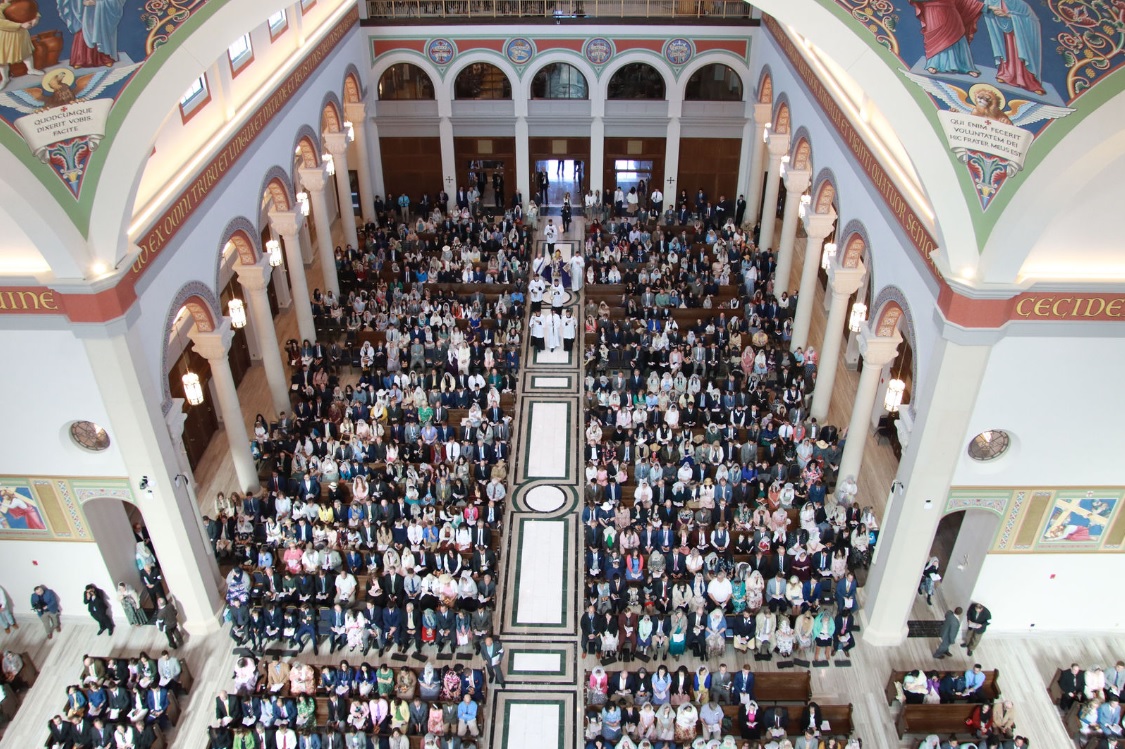
Itty bitty.
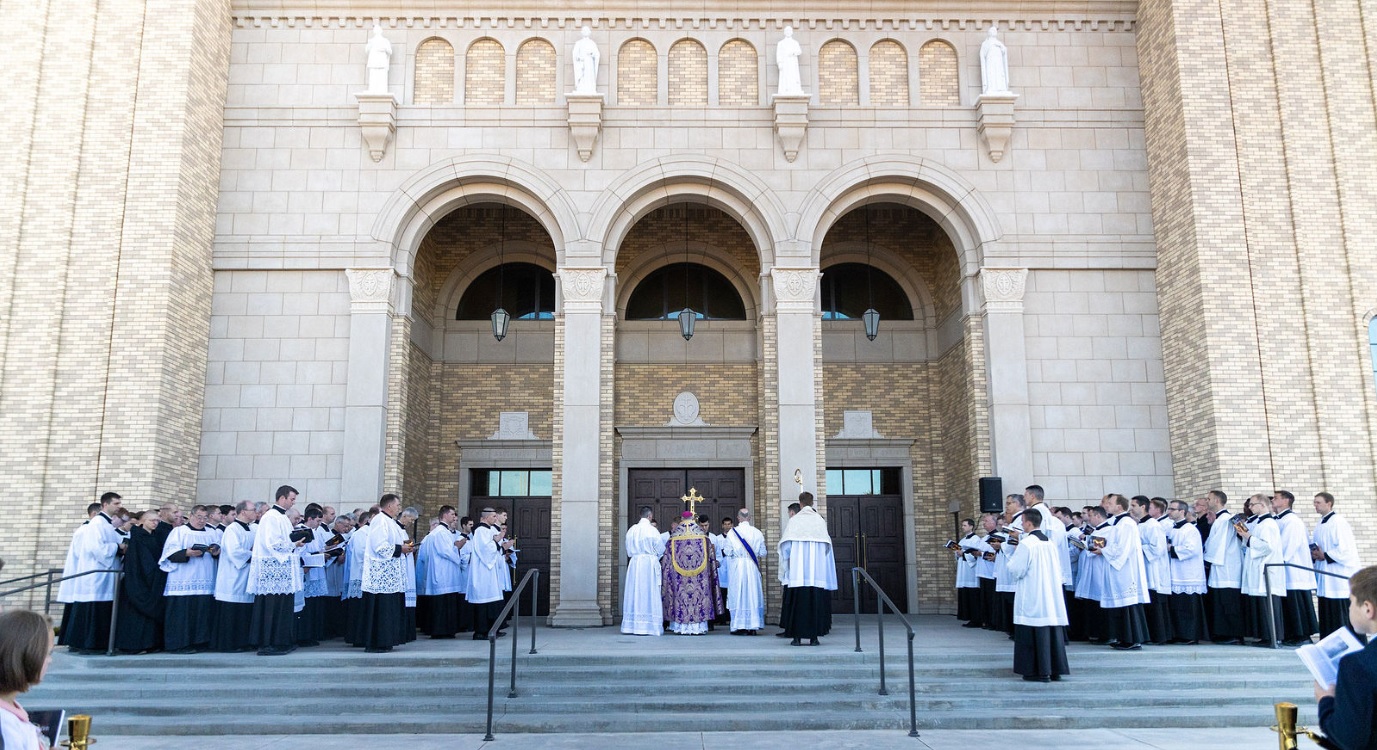
Just a humble little utilitarian place, thrown together as “good enough”.
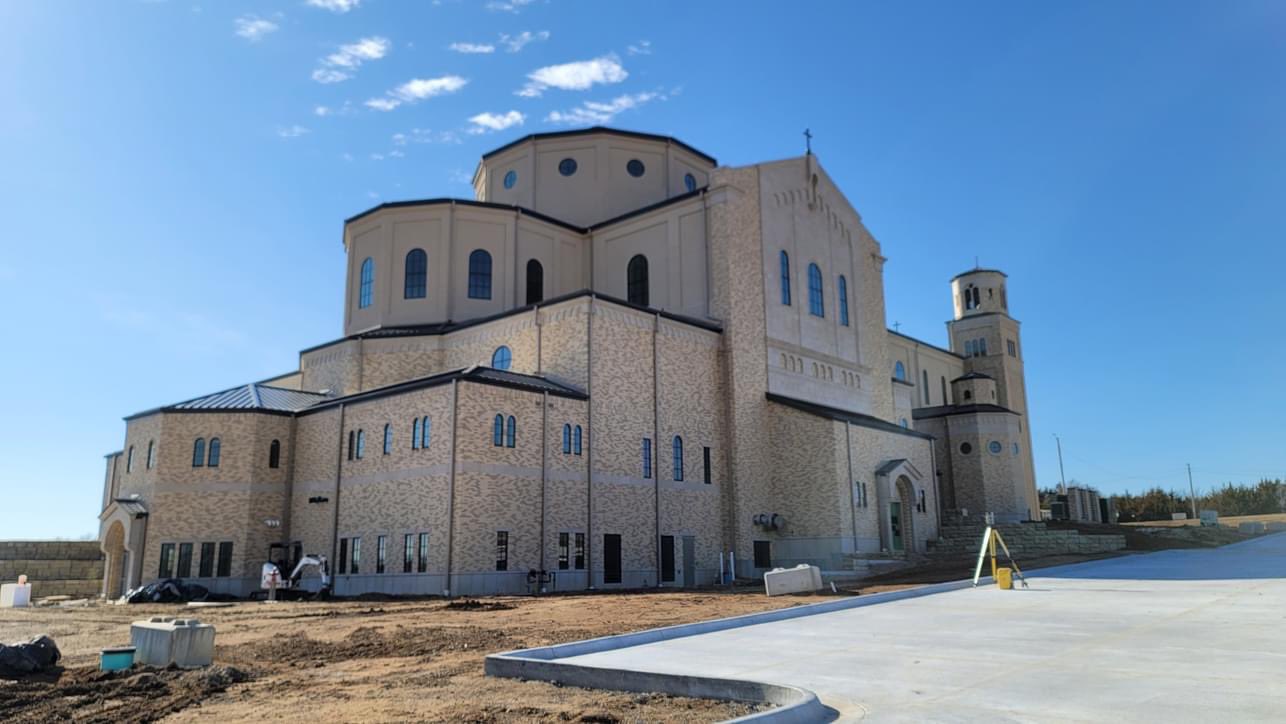
Proof of concept.
Hey, bishops!
They did it. They built that. It’s not an idea or a drawing or a dream. It’s concrete and open and functioning.
Now that they have demonstrated that they can build it, they will build others. Their followers know this, too. People like to donate for concrete projects and now they have a track record.
Proof of concept.
In the CWR piece there is a different proof of concept example, though not as dramatic or as, it seems to me, weighty in it’s long-term implications. A “Novus Ordo” parish doing Novus Ordo-y things right and being successful. The point is that when you do Catholic things with common sense, whaddya know, things seem to go better. What does that tell us?
The rocking chair was proof of the concept the Gibson character had. It was a proof that the chair he envisioned could be made.
The Immaculata.
More to come?
Oh, and the newly confirmed… just sayin’….
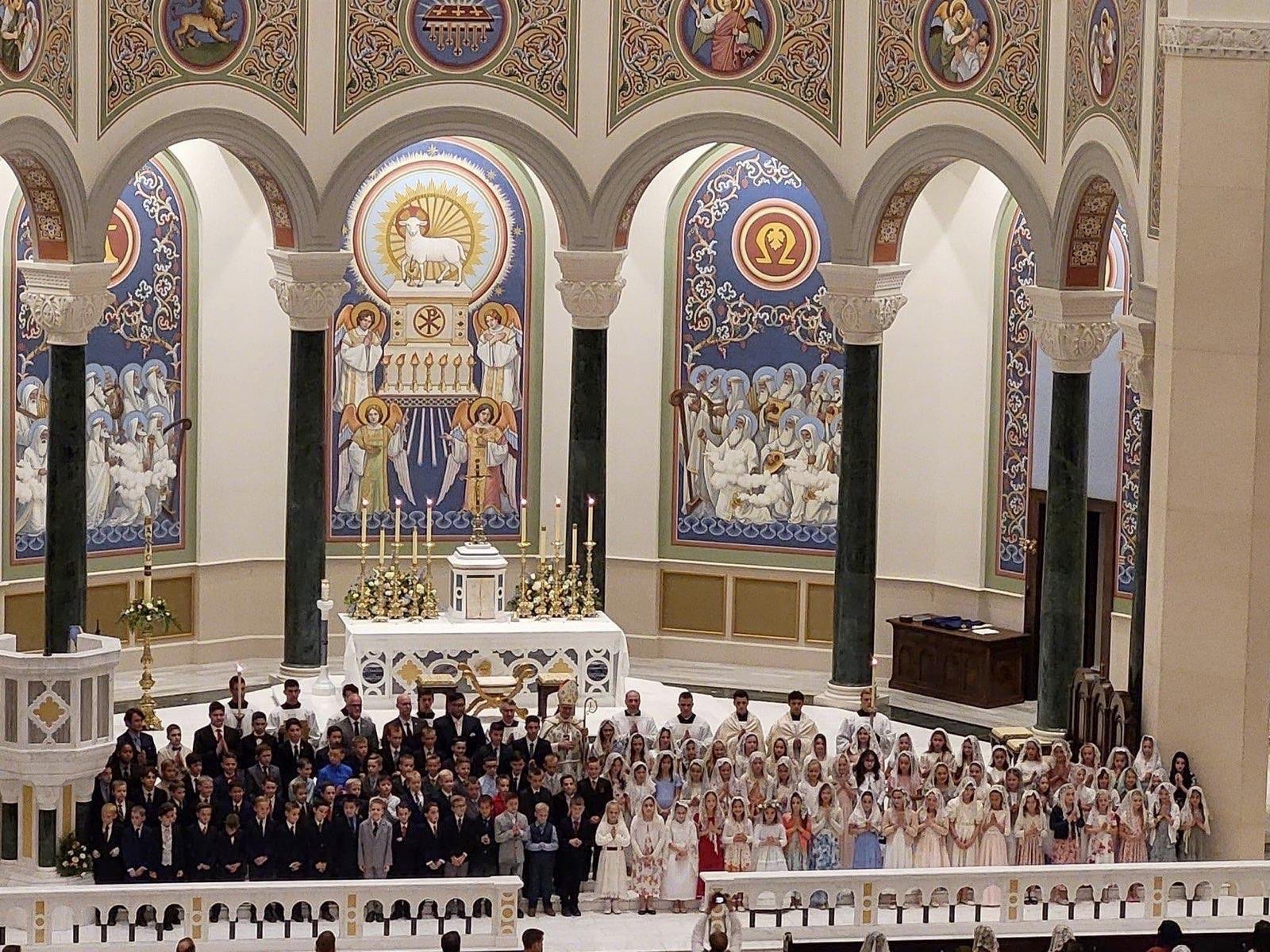
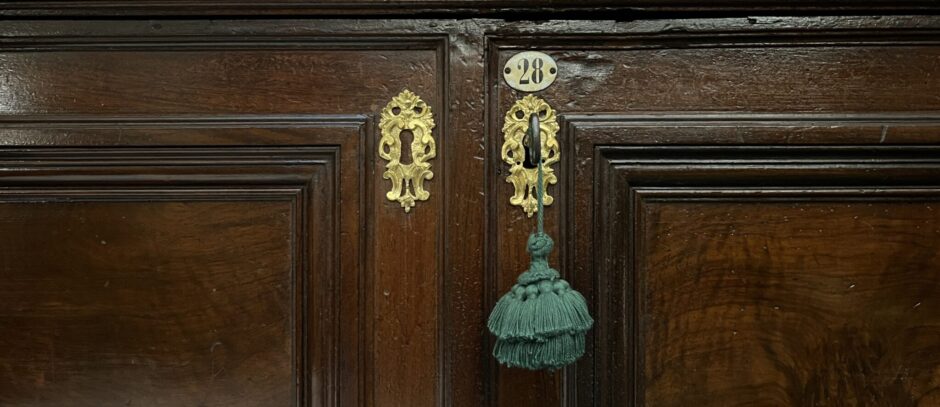

































“Normal people, when they try to do something and they don’t get too far, on seeing others succeed begin to wonder how they did it. Are they doing something differently? What’s the key to their success? Moreover, when normal people fail several times they make changes.”
I have spent many years in construction. I have worked on many projects. There are a large number of people in administrative roles who simply do not behave this way. They make the same mistakes over and over and they either blame the contractors (who sometimes bother to warn them) or blame cru-el fate in a flourish of Attic drama.
Chesterton once remarked that the one fault that could be imputed to St. Thomas Aquinas was that he believed people would listen to reason…
That overhead photo of the interior of the new SSPX church in Kansas reminds me of how EVERY Sunday Mass looked to me in the early 1960s ! I was an adolescent. No air conditioning either! Reciprocating fans on the walls. The ushers were not there to guide people to communion row by row; they were there to find you a seat!! It was standing room only many times. My younger sister would sometimes faint from the conditions.
And today . . . .
After the diocesan TLM was cancelled here, they decided to re-educate all TLM attendees on the NO. Only problem, 90% of the attendees no longer attend that parish. 50% are now attending the SSPX Mass.
That’s tiny? I’d like to see someone’s idea of huge.
It’s a little difficult to gauge size due to the severe angle. Even so, if I start from the transept and move toward the rear, this “chapel” appears to have more rows of pews in it than my FSSP apostolate parish.
In 1988, my wife and I moved to Northern Virginia. We went to a “Catholic Church” we found in the phone book. It was in a house basement. It was a TLM. An independent priest, if I remember now correctly. My wife was a new convert, and I am a cradle Catholic. We had never seen the old rite before. We left after a few minutes–it was a low Mass, I know now–and felt like we had stepped away from a Flannery O’Connor novel. Old folks, people in wheel chairs. A tiny group of hangers-on, God bless them. We now both love the TLM when we can get to one. How wonderful to see this SSPX Church! The lovers of the old rite, however the regime tries to crush them, can’t be vanquished. God loves right worship for our sake too much!
As a cradle Catholic who now assists exclusively at an SSPX chapel (after a diocesan TLM was shut down), the answer is obvious: the SSPX offers the ancient practice and teaching of the faith.
And I’m not just some fusty antiquarian, stuck in the past, who likes “old stuff”. Rather, connection to tradition is the surest guarantee of divine truth, in praxis and doctrine.
Modern Bishops are constitutionally incapable of seeing the failure of their entire conciliar project. They will NEVER look to SSPX to learn anything.
jflare29,
I believe Fr Z was being funny on the “tiny” comment.
As far as utilizing common sense. It’s not so common anymore.
Listening to a recent talk by Dr Peter Kwasniewski, he states that a major roadblock for current leadership is simply Pride.
Not being willing and able to admit huge mistakes were made concerning especially the liturgy.
Ah! Wagon wheels in Kansas!
Pride and inability to consider one’s potential error is certainly a possibility.
A catastrophic lack of intellect, to be truly incapable of forming the idea “Hm, why does theirs grow and mine not?” is a possibility.
A third possibility is that we are mistaken – they are not afraid to acknowledge an error, because they aren’t making one. They are not “too simple to ask” because they don’t see a thing to wonder at or to worry about, they see an outcome which matches the plan exactly.
So which is it excellencies? Are you (A) too proud, (B) too dumb, or (C) actually TRYING to wreck the Church?
This dawned on me when I compared my own diocese cathedral to that where my children live. Reverent, traditional attire, traditional music, fostering as much beauty as they possibly can taking traditional things as a cue, and celebrating the NO. My own cathedral celebrates the same Mass with no respect for traditions, a choir of three in a niche carved out where pews used to be while the loft grows cobwebs, everyone in casual to “as-for-basketball”, no cues taken from any traditional practice at all. Once I realized the “ugly” was all a matter of choice, the option (C) suddenly materialized as the likely reason.
I suspect that not a few bishops look at the success of the Immaculata as an object lesson in what not to do— precisely because doing those things attracts and multiplies the “wrong sort” of Catholics. Many bishops would rather see the Church in their own dioceses fall off a demographic cliff rather than foster the growth of ‘those sort’.
.
Here’s an interesting thought exercise: imagine that somehow the USCCB mandated performance reviews for all bishops in the Conference. Each bishop submitted an annual report on the number of converts, baptisms, marriages, confirmations, vocations, and ordinations. If a bishop’s numbers per capita trended up, they were eligible to vote, sit on USCCB committees, etc. And if their numbers really shone, they chair those committees, maybe head the USCCB for a term, and get the attention of Rome when a plum archdiocese needs a new appointee.
.
Conversely, bishops who can’t or won’t foster conversions, whose numbers are down for baptisms and marriages and funerals, and who can’t seem to find vocations or seminarians— well, those guys don’t get to vote in USCCB proceedings. After all, if they can’t get it together in their own corner of the Church, why should they have a voice in directing policy for the Church nation-wide? So, no voting, no committee seats for them until they turn things around in their diocese. And no promotions, either.
.
I wonder what effect an arrangement like that would have on the Church’s demographics long-term?
A few weeks ago, a German bishop said something along the lines that “conservatism” and “the right” were dead-ends for the Church. The only way forward, according to him, was liberalism, specifically involving jettisoning the Church’s unpopular teachings on sexual morality. The Catholic left’s narrative, embraced now at the highest levels at the Domus Sanctae Marthae, is that after the 2nd Vatican Council, the Church was strong and popular and was pivoting onto the right path to maintain and even expand its strength and popularity. But at some point in the ’70s, reactionary conservatives gained the upper hand and put a halt to the progress. Only under this pontificate, is the Church finally getting back on the right track. The current war on the TLM is not an accident. It makes sense in the context of the mentality of believing that traditionalism and conservatism are the main roadblocks to a glorious liberal future for the Church. Now, from the right, we can point out until we’re blue in our faces that nowhere in the world has any liberal brand of Christianity ever enjoyed any sort of long-term success. But it’s of no use. The Catholic left take it as axiomatic that liberalism is the answer, and no amount of evidence to the contrary will ever persuade them.
I believe that most bishops have forgotten that their primary job is the salvation of souls (Code of Canon Law 1752 … “and the salvation of souls, which must always be the supreme law in the Church, is to be kept before one’s eyes”).
A bishop, with full knowledge of his primary duty, should be intellectually curious wondering how others are achieving success, evaluating what they are doing, and utilizing what is good, holy and true. And I also believe there is a culture in most diocesan offices that “this is how we have always done it”. A bishop needs to be able to change the culture of the organization created to assist him in carrying out his duties to teach, govern and sanctify.
I’ve mentioned this before, but it’s worth restating. My territorial pastor has Traditionalized the NO greatly. Gregorian chqnt, ad orientem, kneeler for Communion…in fact, if I want to see a priest in a biretta, I’d have to skip my SSPX chapel and stay local.
What are the results? A thriving parish raking in cash and saving souls. I went to confession on a Tuesday night ( he expanded hours) and there were 11 people behind me in line…plus I was behind 3.
If the Libs can’t understand that orthodoxy is the future, it is their problem. They’re a dying breed anyway.
Now they have the buildings AND the faith.
The problem is that the episcopate, as a whole, has been institutionalized. It is impossible for them to look outside the box, think outside of the box, act outside of the box. If you put them outside of the box, they will get anxious and do anything to get back into the box where it is safe. Yes, there is pride involved in spades, but it is not the root sin of current actions and is now more habitual than any consciously undertaken mortal sin. The box is all they know and all they choose to know and all that they can now know.
It is all so sad.
The best that can be hoped for is that they will leave the younger generations alone, instead of trying to drag them into their small box.
Spurious claims that our patrimony was financed by “selling indulgences” aside, the Immaculata, like most of the churches, was financed by people like myself sending what they could. Nobody wants to bankroll even their own diocese if they believe it will fail in the near future. My diocese, having formed ‘pastorates’ out of the parishes has now embarked on the cookie cutter reductions of whatever the consultants told the bishop to do. Oldsters need someone to bury them and are keeping many dioceses afloat, but that won’t last much longer.
@Clinton: brilliant yet practical solution. And attainable, using a spreadsheet and some intestinal fortitude!
These photos remind me of last Sunday’s Mass at our little FSSP church for first Holy Communion (30 communicants). It was packed, including all the folding chairs in the narthex and along the side aisles. Mass was a solid 90 minutes, and the only people squirming were the younger-than-two sector. After Mass, we processed out to the little Marian shrine and had a May crowning, which is a thing I never saw growing up in the 70s and 80s in my Catholic schools. Everyone sang the beautiful old hymns while the breeze blew and birds chirped.
And because we don’t have a parish hall, cake and refreshments were served out of the garage, and people stood around on the rectory lawn and in the parking lot, while HORDES of children darted about.
Our parish has no DRE — the pastor and sisters direct the religious education.
It’s SO SIMPLE. You just have to want it, I guess.
Pingback: TVESDAY AFTERNOON EDITION – Big Pulpit
Cardinals and Bishops change? Good Lord, I needed THAT laugh. Easier for a VLCC supertanker to fit through an eye of a needle than that!!!
It was embarrassing that not a single non-SSPX bishop attended. At a minimum, the Archbishop of Kansas City and his three suffragan dioceses: the Dioceses of Dodge City, Salina, and Wichita should each have been represented – even as an “ecumenical” courtesy, but of course, we know why they won’t attend and their pride goeth before their fall. Bishop Schneider and Bishop Huonder
should have attended.
On another note, I was on a conference call last week with an SSPX prior trying to locate clergy for my diocesan TLM which is in danger of suppression. He shared that they have gotten over 80 calls for assistance and climbing in the U.S. alone, but even they are limited by how many men they ordain each year. To use a Titanic analogy, imagine a rescue ship receiving 80 S.O.S. calls at once! I hope the SSPX will unveil a formal “affiliate program” for diocesan priests who need to be sheltered through this crisis. I’d like to see a deal where a new SSPX priory could be established where ever three or more diocesan priests would agree to establish a house.
N.O. bucks, N.O. Buck Rogers
Father, this is a thought-provoking post and I thank you for it.
I am curious as to what you and your readers think of the Priestly Fraternity of St. Peter (FSSP). My experiences with the FSSP have been universally good and it is through the FSSP that my family was introduced to the TLM.
It seems to me that we can know a tree by its fruits and the FSSP’s fruits seem good. If this is so, why do we Traditionalists tend to talk so much about the Society of Saint Pius X (SSPX)?
To my thinking, we Latin Rite Catholics have our own source for really good, traditionalist liturgy, music, rites (more generally), and homilies. Probably a lot of us go to FSSP churches regularly for our TLM so where does the SSPX fit into the Traditionalist worldview, when we have the FSSP?
What scares me is that I believe they understand the concept and still choose otherwise. I’ve seen it time and time again with the “boomer” generation as we say. Clearly the younger generation wants tradition, it comes up in youth groups etc, it’s talked about and yet the Leaders tell the youth, you actually want otherwise. A massive problem I’ve witnessed is that the older generation that went through the sixties and seventies won’t grow up or mature in the faith. It’s the same mentality as the alphabet crowd needing to indoctrinate the youth and having drag shows for children. They see what works and obstinately choose otherwise. Obviously I could be wrong, but I see it all the time. My wife and I were married in the Latin Mass and her EWTN employed Father tried telling us what we ACTUALLY wanted with our wedding and we were mistaken. He refused to see what we desired and then proceeded to gaslight us. It didn’t work. He has now been estranged from our family for six years because he was so angry about traditional Baptisms and not wanting guitars at the ceremony. I see him as no different then the hierarchy. A refusal to mature and grow up. It’s actually a Manhood crisis. It’s sad to say, but the Church will change when a generation that had power ceases to be.
I would never assume the Bishops and Cardinals don’t understand what packs the churches or where the vocations are coming from…I think they know exactly what they’re doing. I think Our Lord had a word for them…something about hirelings, was it?
Clearly, they’re all backward mummies suffering from advanced nostalgiosis.
@restoration, it is sad that the bishops would have likely attended the dedication of a new mosque but cannot bring themselves to go to an SSPX dedication.
@David Spaulding I think the concern with some (not all) traditionalists is that the FSSP still comes under the whims of the Vatican whereas the SSPX has established some independence and is more likely to survive if things really get bad.
@David Spaulding
As someone neither affiliated with the SSPX nor the FSSP, to answer your question it strikes me strange when people separate the SSPX out as somehow not being part of what “Latin Rite Catholics have as a source for…”. That sort of thinking has to go so that the laity feel free to move between SSPX, FSSP, ICKSP, and Diocesan/Religious TLM parishes rather than having a bunker/ghetto mentality filled with suspicion of the other Catholic groups that only serves to divide and advance the machinations of the heterodox bishops.
The SSPX are “ours” just as much as the FSSP and the rest are. That is where they fit in.
@David Spaulding
“Probably a lot of us go to FSSP churches regularly for our TLM so where does the SSPX fit into the Traditionalist worldview, when we have the FSSP?”
The FSSP is excellent, and cooperation with the local Ordinary is the optimal situation. The same can be said for the others who are in a canonically regular situation.
Now, when the local Ordinary is obsessed with a “nostalgic disease,” an “indietrismo” of “backwardism” to restore the hazy lazy days of the hippy era (for which I was, thankfully, not alive), this is where the SSPX tends to do quite well. The question remains: What exactly are they doing?
It’s a question of “fix it or I will, and you won’t like it,” and it occurs throughout Church history. I could cite the OT, but it’s the kind of thing that happens elsewhere: less than saintly kings straightening out their clergy (eg. William the Conqueror or Henry VII), upstart mendicants making the bishops look bad, emperors calling councils and straightening out the popes (eg. Otto the III). I think the SSPX is a part of this trend towards “external repair” we see when the bishops refuse to cooperate with divine directives.
“why do we Traditionalists tend to talk so much about the Society of Saint Pius X (SSPX)?”
Because it’s an unconcluded saga. Most of us are hoping they will be regularized one day (they will). When they are, it will be a day of reckoning for the abject silliness of the latter half of the 20th century.
Although I can wish that what transpired in 1988 when Archbishop Lefebvre consecrated 4 bishops happened in a different way, I am glad that the SSPX-associated bishops that exist are able to serve God’s people and that in doing so, places like this Kansas miracle can illustrate the power of tradition. But it occurs to me that those consecrations were 35 years ago, and those bishops are no spring chickens. Does the SSPX have any kind of a game-plan that doesn’t involve a whole new round of excommunications? I don’t have any good idea of one, myself, but I worry about the problem.